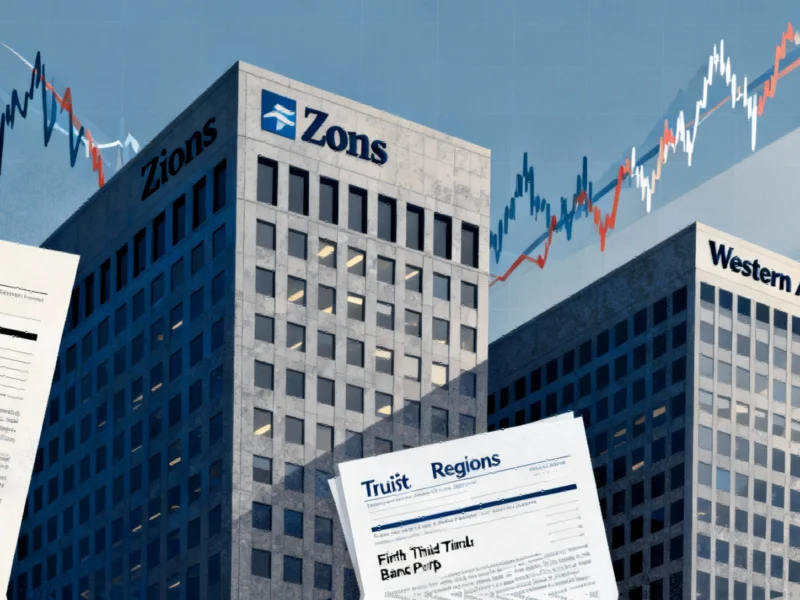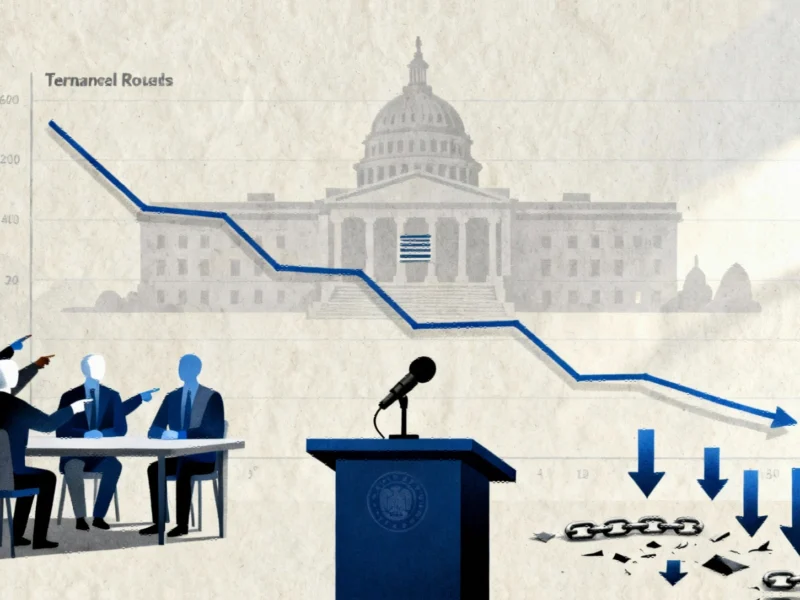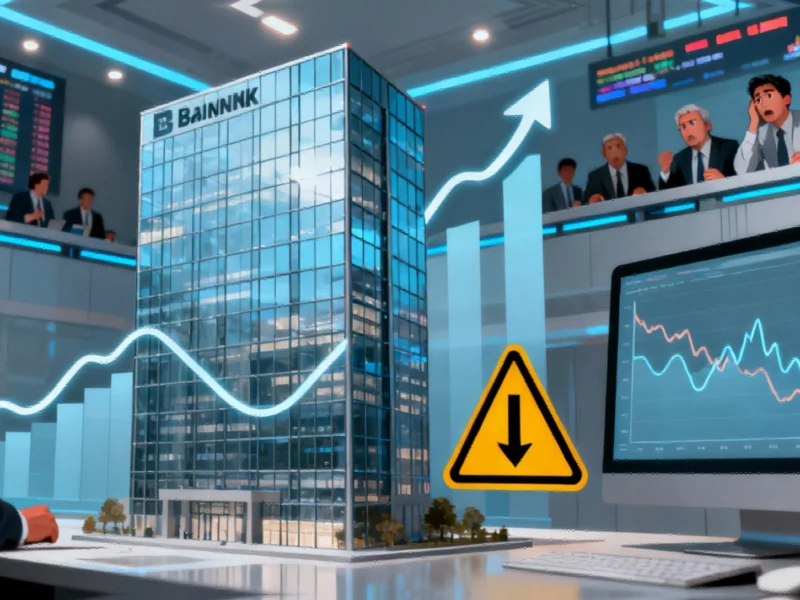Market Swings Highlight Underlying Credit Worries
Financial markets experienced significant volatility this week as regional banking stocks plunged before partially recovering, with analysts suggesting the movements underscore persistent concerns about credit risk in less transparent lending sectors. According to reports, Zion Bancorp and Western Alliance Bancorp saw their shares drop 13% and 11% respectively on Thursday after disclosing lending issues, though both reportedly recovered some losses by Friday morning.
Bank-Specific Issues Trigger Broader Concerns
The volatility began when Zion Bancorp reportedly disclosed a $50 million charge-off on a loan underwritten by its subsidiary California Bank & Trust, while Western Alliance revealed a lawsuit against a borrower it alleged had committed fraud. Sources indicate these developments sparked fears about potential weaknesses in credit markets, particularly in the growing private credit sector where transparency remains limited.
Market professionals noted that the initial sell-off reflected concerns that credit problems might be more widespread. “When you see one cockroach, there are probably more… Everyone should be forewarned on this,” JPMorgan CEO Jamie Dimon reportedly stated, warning investors to prepare for potential credit-market upheaval. His comments referenced recent bankruptcies of subprime auto lender Tricolor Holdings and auto parts supplier First Brands.
Broader Market Recovery Amid Divided Expert Views
By Friday, the wider banking sector appeared to stabilize, with the momentum reportedly attributed to positive earnings reports from Truist Financial, Regions Financial, and Fifth Third Bancorp. The recovery suggested that most investors didn’t see a systemic crisis brewing, according to market analysts.
However, experts remain divided on the significance of the volatility. Some economists suggested that isolated loan losses in private credit markets reduce returns on diversified portfolios but don’t necessarily trigger economy-wide credit crunches. Meanwhile, other analysts pointed to the Federal Reserve policies and economic uncertainty as factors that might be exposing cracks in conventional risk models.
Private Credit Market Scrutiny Intensifies
The report states that concerns around private credit—the sprawling world of non-bank lenders including private equity firms and hedge funds—center on transparency and underwriting standards. As competition in this sector has soared, analysts suggest underwriting standards may have eroded as lenders compete for business.
“This is a reflection on the fog involved with private credit and equities,” Marcus Sturdivant Sr, a managing principal at advisory firm The ABC Squared, told Business Insider. “Main Street is concerned, Wall Street is on watch, and the total economy is feeling the pinch.”
According to S&P Global Market Intelligence, major banks continue to play a significant role in financing nondepository financial institutions, with the nine largest US banks reportedly accounting for 75.1% of the industry’s loan growth to these entities in the second quarter.
Regulatory and Economic Context
The recent market volatility occurs against a backdrop of economic uncertainty and evolving regulatory landscapes. While some ratings agencies have reportedly stated they’ve yet to see real cracks forming in the credit cycle, the episode serves as a reminder that risks can emerge from unexpected places.
Financial experts note that the situation highlights how interconnected modern banking has become with alternative lending sectors. As stock markets continue to navigate these uncertainties, observers are watching for how broader industry developments and related innovations might influence financial stability. Meanwhile, market trends in private credit continue to evolve alongside recent technology advancements and global economic shifts that could impact lending practices. The ongoing sector transformation adds another layer of complexity to credit risk assessment.
This article aggregates information from publicly available sources. All trademarks and copyrights belong to their respective owners.



